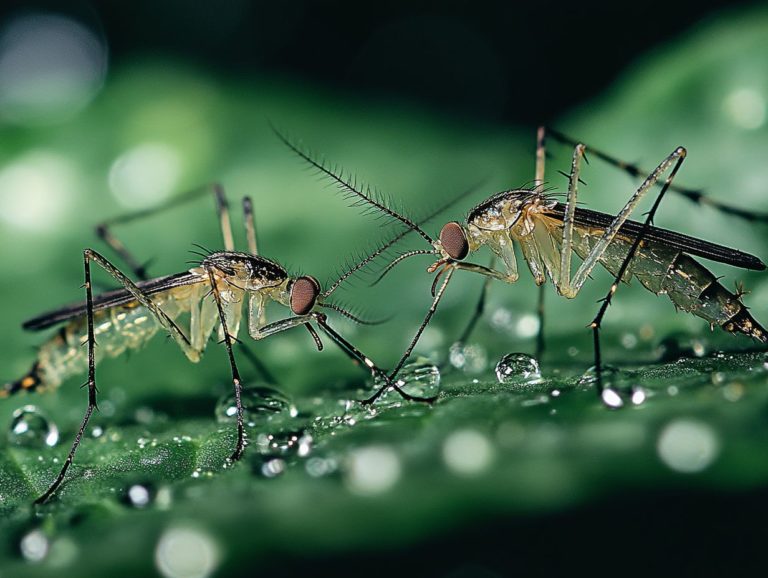How to Diagnose Pests Versus Diseases
Pests and diseases can cause significant damage to your plants, crops, and gardens. This can leave you feeling overwhelmed as a gardener or farmer.
Understanding the differences and similarities between pests and diseases is essential for effective management. This article delves into how to identify pests and diagnose diseases, emphasizing key signs and symptoms to watch for.
It examines practical diagnostic methods, including visual inspections and laboratory tests, while offering effective strategies for prevention and management. Equip yourself with the knowledge you need to safeguard your green spaces!
Contents
- Key Takeaways:
- Understanding Pests and Diseases
- Identifying Pests
- Diagnosing Diseases
- Effective Strategies for Diagnosing Plant Pests and Diseases
- Preventing and Managing Pests and Diseases
- Frequently Asked Questions
- What is the difference between pests and diseases in plants?
- How can I tell if my plants are being affected by pests or diseases?
- Do pests and diseases have similar symptoms?
- Are there any natural ways to control pests and diseases in plants?
- Can pests or diseases be transferred from one plant to another?
- What should I do if I suspect my plants have pests or diseases?
Key Takeaways:
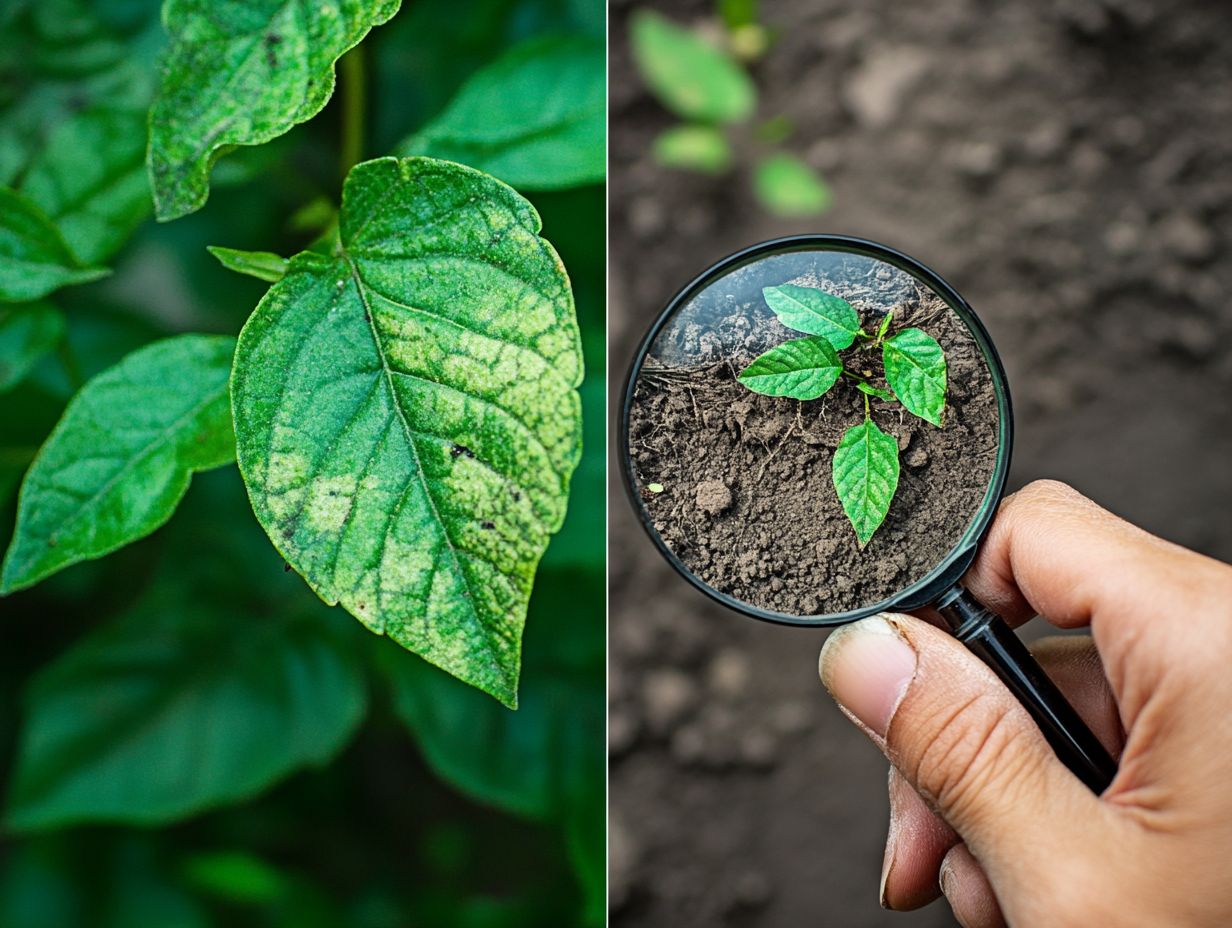
- Know the differences and similarities between pests and diseases to accurately diagnose and treat plant issues.
- Look for signs and symptoms of pest infestation, such as wilting, holes, or discoloration, to identify the culprit.
- Use a combination of methods, including visual inspections and laboratory tests, to diagnose and manage pests and diseases effectively.
Understanding Pests and Diseases
Understanding pests and diseases is essential for maintaining healthy agricultural crops and natural resources. Improper management can lead to substantial economic losses.
A systematic approach to plant diagnosis involves recognizing various invasive species, assessing pest symptoms, and implementing effective crop management techniques. With this knowledge, you ll be ready to tackle pest and disease issues head-on!
This understanding equips you, as a horticulture professional or Extension faculty member, to embrace combined methods for pest control.
By doing so, you ensure early detection of potential threats while promoting the overall health of crops within diverse ecosystems.
Differences and Similarities
The differences and similarities between plant diseases and pest identification can profoundly impact your crop health and management strategies.
Understanding these nuances is vital for you as a farmer or horticulturist, as it directly shapes your approach to protecting specific crop varieties from invasive species and other threats.
Symptoms of plant diseases often reveal themselves through discoloration, wilting, or unexpected growth patterns. In contrast, pest damage typically presents as visible feeding marks or stunted development. These two factors can coexist, complicating both diagnosis and management.
Effective strategies may include integrated pest management (IPM) techniques that focus on preventive measures, diligent monitoring, and environmentally friendly solutions to minimize reliance on chemical interventions.
Boost the resilience of your crops now for healthier yields!
Identifying Pests
Accurately identifying pests is crucial for achieving effective pest control. As a horticulture professional, this skill enables you to monitor pest symptoms and implement timely interventions.
By harnessing advanced diagnostic tools and digital technology like using your smartphone camera to capture detailed images of pest samples you significantly enhance the pest identification process.
This helps inform your pest control strategies, helping to mitigate potential damage to crops and ensuring a healthier yield.
Signs and Symptoms of Pest Infestation
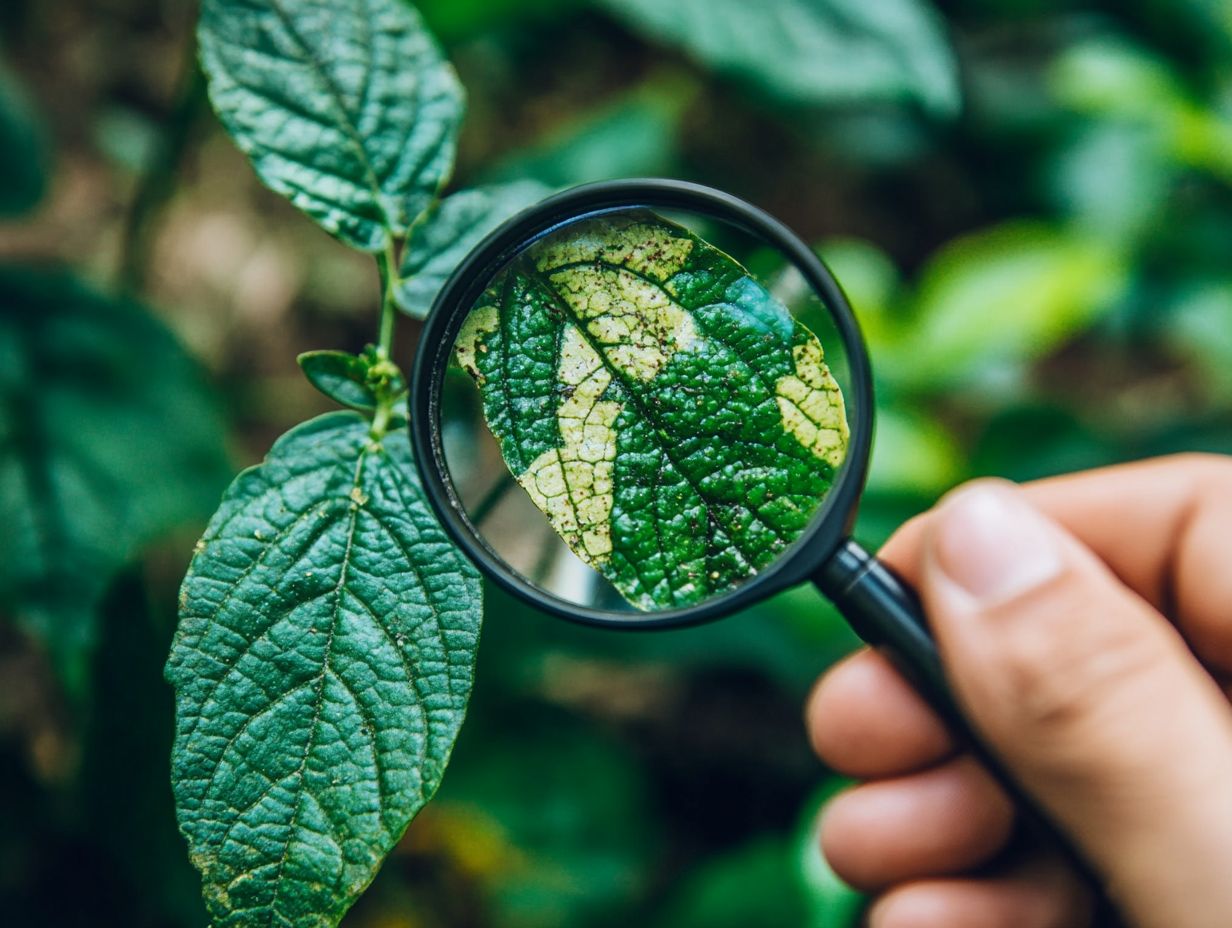
Signs and symptoms of pest infestation reveal themselves in various ways, affecting not only the health of your crops but also your bottom line in agricultural production.
You might observe visible clues such as holes in leaves, wilting plants, or even droppings. These all signal a potential pest problem. Common symptoms include stunted growth and discolored patches on your crops, indicating distress caused by insect activity.
The economic repercussions can be quite severe. Infestations often lead to reduced yields.
They also result in elevated pest control costs. Act now to protect your investments by implementing integrated pest management strategies. These strategies combine cultural practices, biological controls, and chemical treatments to promote sustainable agricultural methods.
This holistic approach not only protects your crops but also ensures long-term viability for your farming endeavors, creating an environment where the future of agriculture can truly thrive.
Diagnosing Diseases
Diagnosing plant diseases is a careful task that demands your keen eye for detail. Accurate diagnoses depend on observed symptoms. Horticulture professionals often collaborate in this process, pooling expertise to arrive at the best conclusions.
By utilizing diagnostic clinics and advanced microscopy techniques, you can analyze samples effectively to uncover the underlying causes of diseases. This thorough approach guarantees that you implement the most appropriate disease management strategies, ultimately fostering the health and productivity of agricultural crops.
Common Symptoms and Causes
Common symptoms and causes of plant diseases often stem from pest problems, soil nutrient deficiencies, and varying environmental conditions impacting your crops.
By identifying symptoms like yellowing leaves, wilting stems, or unusual spots, you can gather valuable clues to diagnose potential issues. For example, fungal infections such as powdery mildew typically manifest as white, powdery spots on the leaves. Aphid infestations might stunt growth and cause curling. Nutrient deficiencies, particularly a lack of nitrogen, can present as overall poor vigor and chlorosis.
Understanding how factors like temperature fluctuations, excessive moisture, or prolonged drought can stress your plants is essential for effective management. By evaluating these elements, you can tailor your interventions more precisely, ensuring the health and productivity of your crops.
Effective Strategies for Diagnosing Plant Pests and Diseases
When diagnosing plant pests and diseases, you ll find a sophisticated blend of visual inspection, laboratory tests, and advanced diagnostic tools at your disposal.
The DDIS process, which focuses on the systematic collection and analysis of digital samples, significantly elevates the accuracy of identifying pest issues and managing diseases. This approach enables you to implement timely and effective strategies for maintaining plant health, ensuring you re always one step ahead in your management efforts.
Visual Inspection and Laboratory Tests
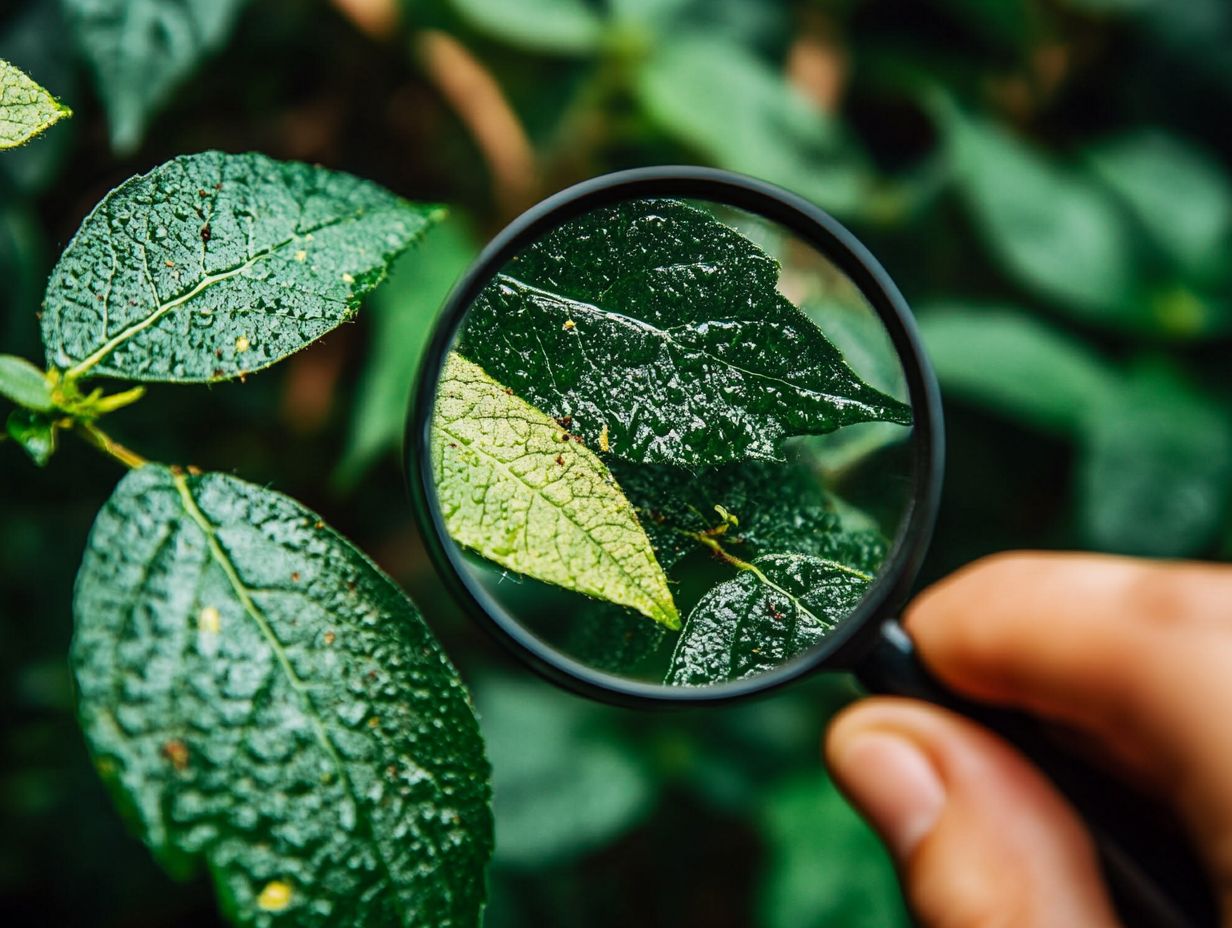
Visual inspection and laboratory tests are essential for achieving an accurate diagnosis of pest and disease issues in agricultural crops.
These methods work together to provide you with a detailed understanding of a plant’s health, revealing visible symptoms such as discoloration, wilting, or unusual growth patterns that may indicate deeper problems. Noticing these signs is often your first step in identifying common indoor plant pests or pathogens, prompting a more thorough evaluation.
To validate these initial observations, laboratory tests become crucial, offering precise insights through molecular analysis and pathogen identification. By effectively combining both approaches, diagnostic services ensure you receive comprehensive evaluations of plant health, ultimately guiding you toward successful management and treatment strategies.
If you notice any symptoms, consider contacting a local expert or visiting a diagnostic clinic for assistance.
Preventing and Managing Pests and Diseases
Preventing pests and diseases is crucial for strong crop health. Proactive strategies like crop rotation can help reduce outbreaks.
Effective pest control is vital for maintaining robust crop health and ensuring effective agricultural practices. By implementing proactive pest control strategies, you can significantly reduce the impact of environmental conditions that may lead to pest and disease outbreaks.
Grasping these strategies is essential for horticulture professionals and Extension faculty who are committed to safeguarding agricultural crops.
Effective Strategies and Techniques
Effective pest control strategies should seamlessly blend integrated pest management principles to enhance soil health and promote sustainable crop management.
By adopting this holistic approach, you can reduce reliance on chemical pesticides while boosting crop vitality. Regular soil testing can guide effective use of organic fertilizers. Crop rotation and intercropping disrupt pest life cycles, making it harder for them to establish.
Incorporating biological controls, such as beneficial insects and microbial treatments, can enrich the soil’s ecosystem, resulting in healthier plants. Ultimately, these combined strategies elevate your crop yields and nurture resilient agricultural practices for the long term.
For more insights, consider visiting the University of Minnesota and Pennsylvania Department of Agriculture for advanced techniques.
Frequently Asked Questions
What is the difference between pests and diseases in plants?
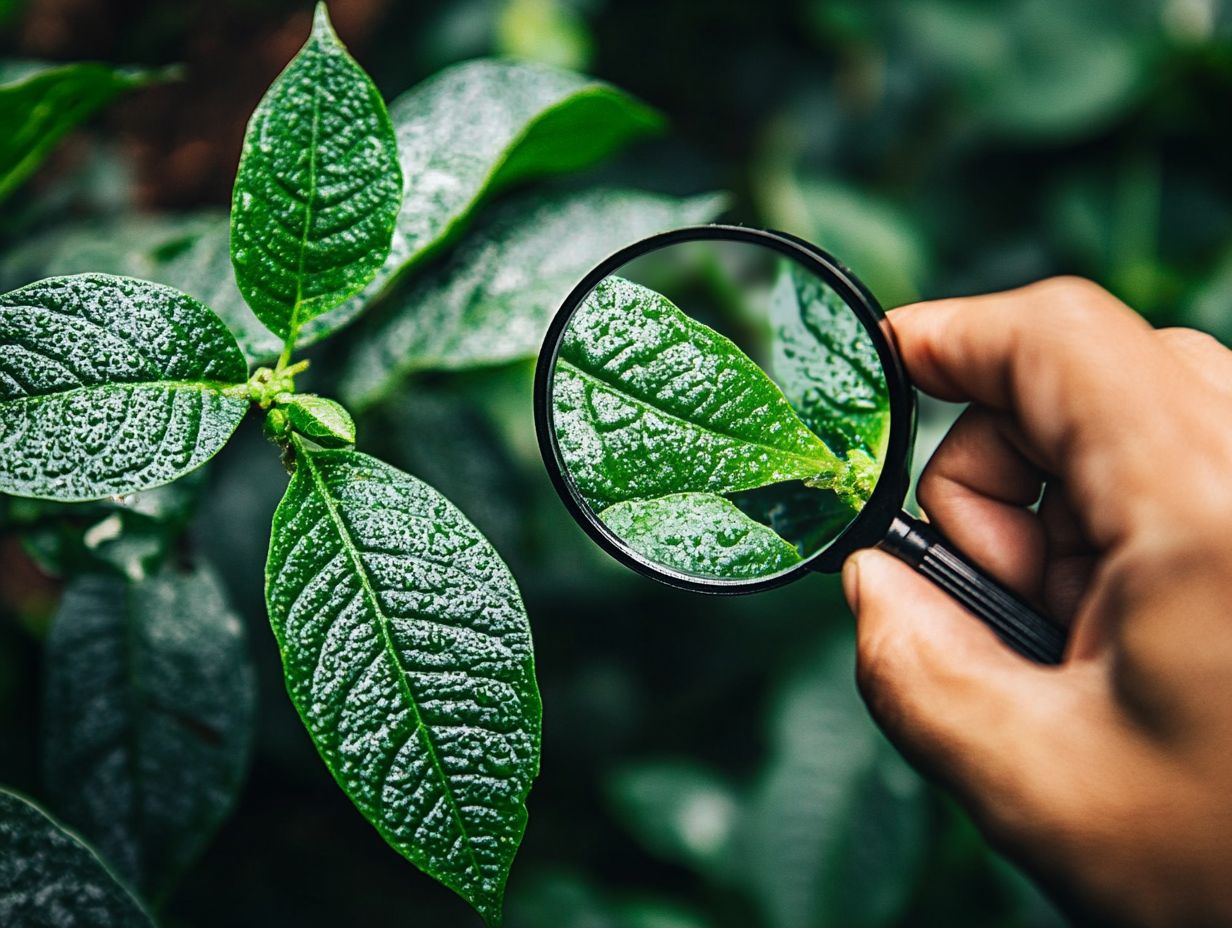
Pests are insects or other animals that harm plants, while diseases are caused by microorganisms such as bacteria, viruses, or fungi.
How can I tell if my plants are being affected by pests or diseases?
Look for visible signs like chewed leaves or discoloration. Diseases often cause wilting or abnormal growth in plants.
Do pests and diseases have similar symptoms?
Yes, some pests and diseases may have similar symptoms, making it challenging to differentiate. It is essential to inspect the plants thoroughly to determine the cause.
Are there any natural ways to control pests and diseases in plants?
Yes, several natural methods exist, such as companion planting, introducing beneficial insects, or using organic pesticides and fungicides.
Can pests or diseases be transferred from one plant to another?
Yes, both pests and diseases can transfer through direct contact or contaminated tools. Practicing proper sanitation is crucial to prevent spreading.
What should I do if I suspect my plants have pests or diseases?
Act quickly to protect your plants! Remove any affected parts and use appropriate methods to control and treat the issue.

